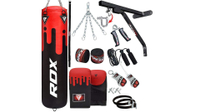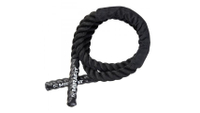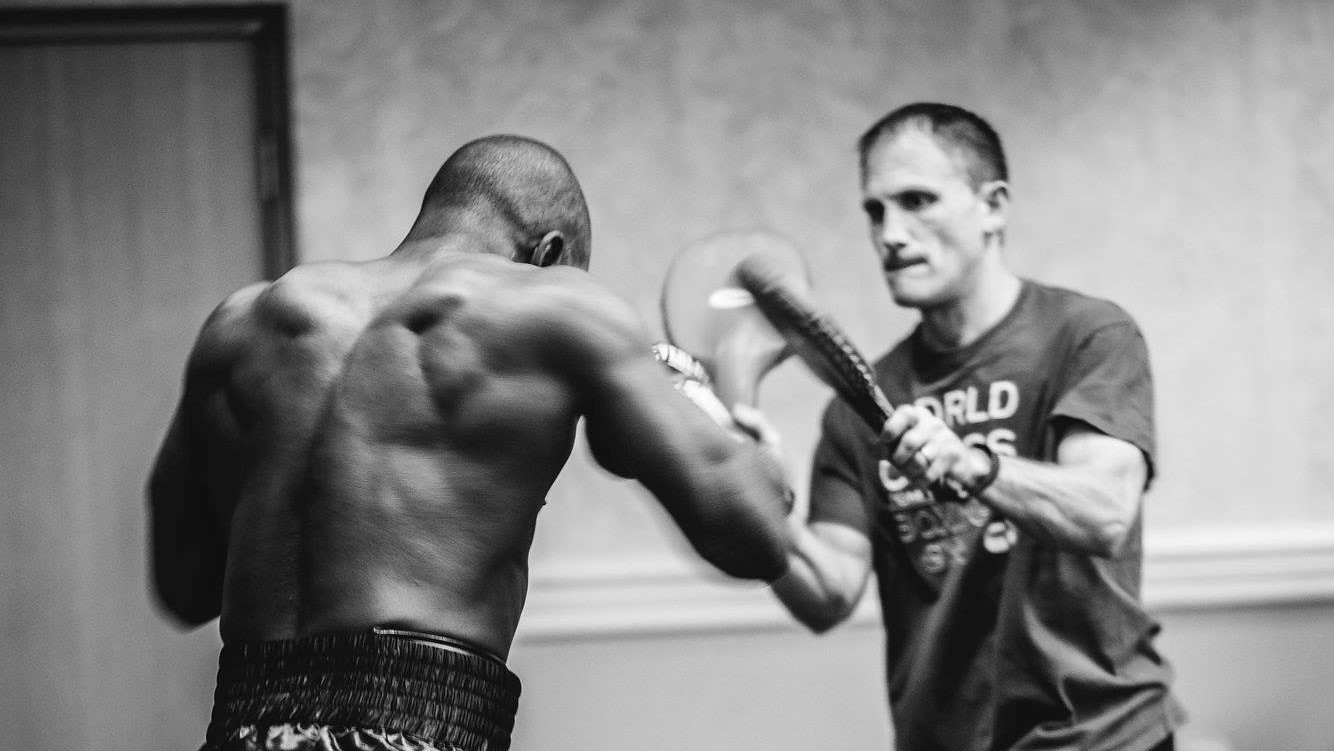

Boxing training is more than just wearing the best boxing gloves and hitting the best punch bag repeatedly. No, the best boxing workout needs to focus on the whole body, including some areas you might not think play a role in placing heavy punches in the ring. The below boxing workout tips might help you get better at boxing.
• 12-minute boxing full body workout
Even if you aren't planning on punching other people inside or outside the confined space of the boxing ring, you might want to listen to these boxing training tips from Ed Latimore, former heavyweight boxer and motivational speaker, who thinks that the "strength of a boxer’s arms does not matter nearly as much as the strength of their legs, core, and posterior chain."
• Boxing training plan from ex-heavyweight boxer Ed Latimore
According to Ed, the "physical demands of boxing are unique in that they require both aerobic and anaerobic capabilities", meaning you will need to have both explosive strength and great endurance to be a good fighter. Apart from following a strict diet and workout regime, you should also pay attention to Ed's tips below.
- Where to buy weights online
- Where to buy treadmills online
- Best Bowflex deals
RDX Punch Bag Bundle | Buy it for £60.99 at Amazon
This monster bundle includes a pair of RDX Punch Bag Gloves, an RDX 16 Gauge Iron Diagonal Bar, an RDX 16 Gauge Heavy Duty Powder Coated Iron Horizontal Bar, a pair of hand wraps, steel chains, a swivel, a jump rope, a D shackle, one punch bag strap kook, the punch bag strap, RDX fixtures and fittings, a hand gripper, car hanging gloves, two bracelets, a boxing glove keyring and an RDX G Core non-tear filled punch bag. You don't need anything else than this to get started for sure?
Tip #1: Never skip leg day
Countless rounds hitting the heavy bag, doing squats and jumping rope.
For 10 to 12 rounds, 3 to 4 days per week, hit the heavy bag with the same level of intensity that you plan to fight with. The muscles in your legs, arms, shoulders, chest, back, and core are all engaged during a heavy bag training session. You need to get your aerobic and anaerobic system conditioned to throw punches as hard as you can.
Sign up to the T3 newsletter for smarter living straight to your inbox
Get all the latest news, reviews, deals and buying guides on gorgeous tech, home and active products from the T3 experts
Become best friends with squats. You can include weights, but it’s not about lifting heavy. Squats can also be done in a boxing fight stance, but it’s best to remember to switch stances evenly. Squats target your quadriceps, hamstrings and calves. This drill creates an anabolic environment, which helps promote body-wide muscle building, improving your muscle mass.
Since a boxer’s movement is continual, jumping rope helps with speed and agility. It also helps to strengthen calf muscles and build leg endurance. A boxer never wants to move around the ring with their weight on their heels and jumping rope forces weight onto the front of the foot.
Mirafit Battle Jump Rope | Buy it for £15.95 at Mirafit
Sure, you can use any skipping ropes for practice but why wouldn't you make the most of your training by getting the Mirafit Battle Jump Rope? The ropes range from 1.1kg to 3.9kg and are 1-2 inches thick, making them the perfect tool for boxing and endurance training. Get swole while you get fit, that's more like it!
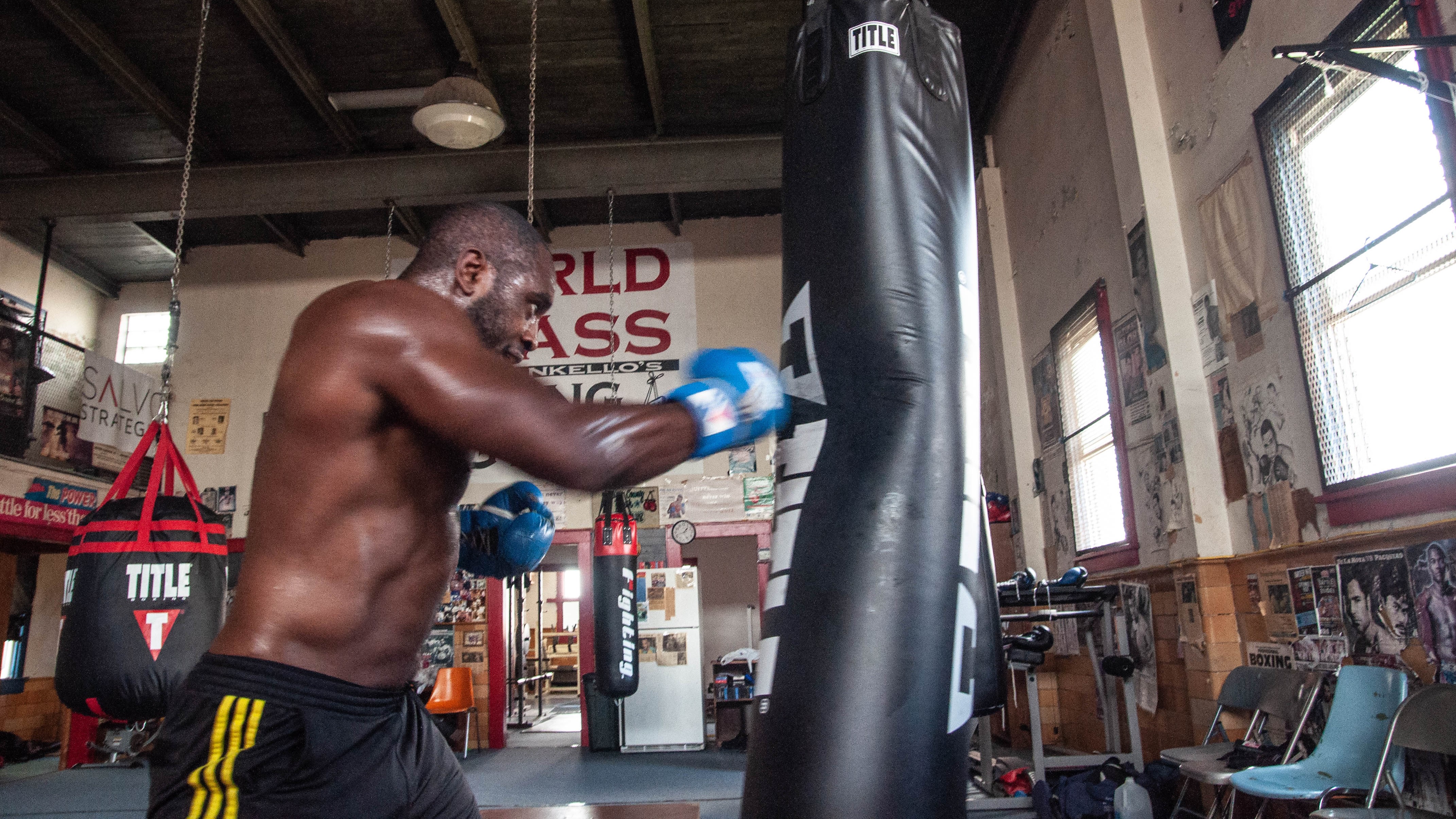
Tip #2: Train your core HARD
Sprints, planks and ab wheel extensions are your ticket to a strong core.
For sprints, do 8 to 10 100-meter sprints at the track with a 30 second rest in between. The main reason boxers do so much running is to build the endurance and functional strength of their legs. Hold your core and utilize diaphragmatic breathing to keep it engaged.
Planks are a wonderful core workout. Assume plank position with a straight and flat back. Tighten your belly button toward your spine to engage your core and squeeze your glutes to keep your body in a parallel line to the floor.
The ab wheel extension is a top exercise for core strength. It works your entire core. Be sure to engage your core while slowly rolling the wheel out in front of you as far as you can go. Keep your back in a straight line and focus on rolling your entire body out with your hips leading the movement. Crunch your body back in with your butt and abs tight.
- How to use an ab roller: this cheap home gym staple packs a real gut punch
- Best ab roller
- Best core exercises
- Hardstyle plank: try this plank variation for quicker summer body six-pack gains
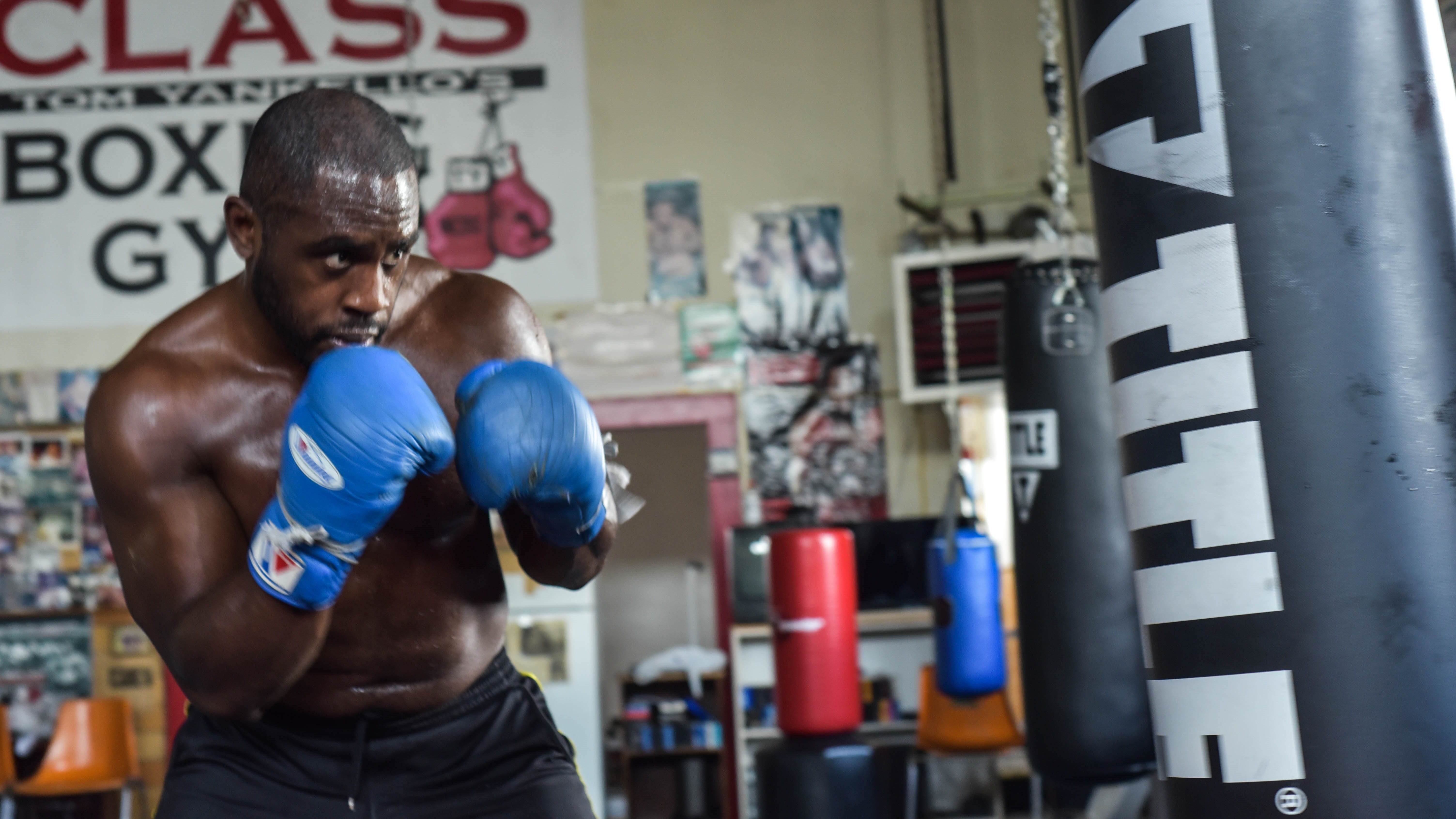
Tip #3: Focus on strengthening your posterior chain
Learn to love deadlifts and back squats.
Deadlifts will increase your elastic hamstring muscle length while also improving its deceleration. This will increase and transfer power through movement up through your upper body.
Back squats mostly condition your quads and glutes, the two biggest muscle groups of our bodies. The back squat also works the hamstrings helping to provide explosive power on the way back up from a squat.
[Editor's note: The posterior chain is a group of muscles on the posterior of the body. Examples of these muscles include the hamstrings, the gluteus maximus, erector spinae muscle group, trapezius, and posterior deltoids. from Wikipedia]
- How to squat right: the barbell back squat is the best exercise for a toned butt and strong legs
- How to deadlift correctly: a full body workout in one move for stronger arms, back and legs
- Best full body workout: these 5 exercises can give you a whole body workout
Theragun Elite Percussion Massager | Buy it for £375 at Theragun
Speed up recovery with the Theragun Elite, This massager have an ergonomic handle that lets you apply pressure to all areas of your body with ease. The Elite is also Bluetooth enabled, has an OLED screen and customisable speed range too. With a 120-minute battery life, the Elite is a deep tissue massager at its best!
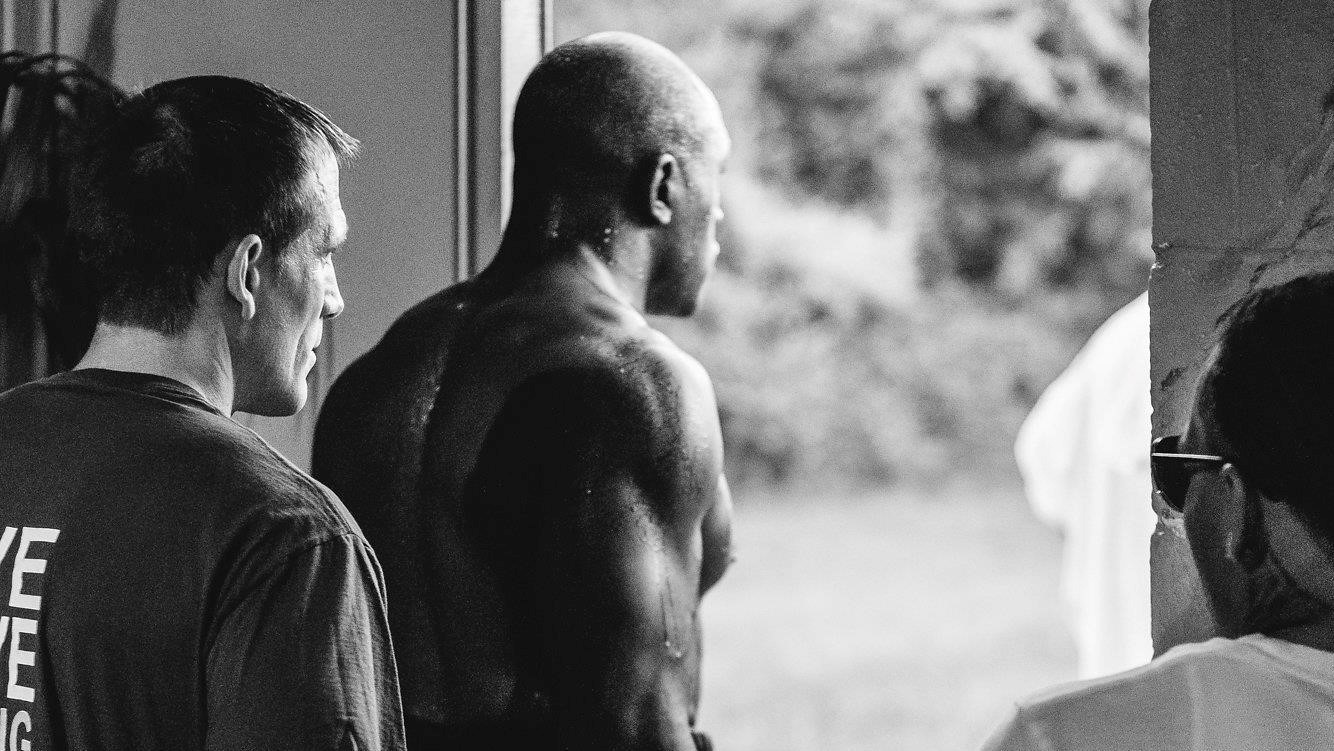
Ed Latimore: How to pack a powerful punch
As well as providing the readers of T3 with practical tips on how to punch harder, Ed was kind enough to provide us with further insights into what it takes to be a real fighter. In his essay below, he touches on the three main components of a true fighter: physical, mental and emotional strength. Without further ado, take it away, Ed.
Fighting is easy. Fighting is fun.
What’s hard is the training for the fight. What’s miserable is the training for the fight.
In many ways, getting ready for a fight is the real fight. Most people will never endure a six to eight-week training camp in preparation for an event that will push them in every possible way.
NFL Hall of Fame Linebacker Ray Lewis once said, “I’ll do Sunday for free. What you’re paying more for is Monday thru Saturday. The practices, the two-a-days, the film sessions, and lifting weights.” In this quote, the attitude about practice versus performance is exemplified. The training to fight is a lot harder than actually fighting, but it’s like that in all sports.
What’s unique about boxing is the objective of the sport.
In the 2002 boxing drama Undisputed, boxing champion George “Iceman” Chambers remarks, “People play baseball, nobody plays boxing. I’m not an athlete, I’m a gladiator.” In other sports, you play and live to fight another day. In every boxing match there is a chance that you could die.
In non-combat sports, fighting is against the rules. Although the penalties vary in severity from sport to sport, fighting is forbidden in any sport not conducted in the ring or octagon. However, in boxing not only is fighting allowed, it’s how you keep score. This means that you have to develop both your ability to deliver and receive punishment. This requires training of not only your body, but your mind and heart as well.
It’s impossible to properly train for a fight and develop these aspects individually. The same exercise that makes your body capable of absorbing a punch also hones your concentration to stay alert during fatigue and builds the confidence in yourself that it won’t kill you. Each area develops the other and all are developed at once.
What follows is my best attempt to discuss how the characteristics of an effective fighter are developed in training leading up to a fight. It’s important to remember that they do not develop insolation from the other aspects mentioned. While a fighter’s development is often uneven, rarely does one of these characteristics improve at the expense of another.
Improvement in one area spells improvement in another, even if the rate of improvement is markedly different.
Physical training
It’s easy to grasp the physical side of boxing. We see the sweat, blood, and tears that accompany the delivery and reception of heavy punches.
Thanks to the Rocky franchise, everyone knows about the miles of running and thousands of sit-ups that go into fight preparation, but there’s more to it than that. The physical demands of boxing are unique in that they require both aerobic and anaerobic capabilities; you need to be able to perform short bursts of activity over the course of a long fight. As a result, a good fighter has to be a hybrid of an explosive and endurance athlete and training reflects that.
General endurance and explosive ability are trained by distance runs, sprints, and skipping rope. My particular training plan was running 2-4 miles 5 days a week and keeping my pace under 7 minutes per mile. For sprints, I’d do 8-10 100-meter sprints at the track with a 30 second rest in between.
This just conditions your body to withstand the demands of the sport, but it’s not enough to be generally fit to fight. A boxer must also be conditioned to execute specific boxing moves at both a high intensity and for a long duration.
To train this, a fighter will spend countless rounds hitting the heavy bag. For 10 to 12 rounds, 3 to 4 days per week, I’d hit the heavy bag with the same level of intensity that I planned to fight with. I wasn’t hitting the bag like I was just going through the motions. I had to get my aerobic and anaerobic system conditioned to throw punches as hard as I could.
Physically, training this way guaranteed that I’d have the physical constitution to fight, but it didn’t mean that I wouldn’t feel tired. The key to dealing with the inevitable fatigue that you experience in a fight is mental training.
Mental training
The fatigue is real, but it’s through the extreme physical training that I developed the ability to keep my concentration high through it. If I keep my concentration, it would not only allow me to maintain my intensity during the fight, but it also made me better able to deal with the pain.
Something that most people don’t realize is that everything in a boxing match is painful. To be a fighter, you have to be able to fight through the pain of a body shot or worse, a broken jaw or bruised kidney. If the punch doesn’t scramble your central nervous system and cause a knockout, then you can fight through it. It will hurt but dealing with it is a matter of mental strength rather than physical.
Much of fight training is as much about training your mind as it is your body. It was not uncommon for me to do 60-90 minutes of hitting the focus mitts with my coach or hitting the heavy bag at as high of an intensity as I could. Yes, this trained my body and endurance, but it trained my mind to work through being tired.
This builds confidence, which is perhaps the most important part of fighting. Without the proper mindset, your physical conditioning is irrelevant. However, the most focused fighter can still have his willpower and courage tested. This is why emotional strength is also important to develop.
Emotional training
A fighter has to believe that he can fight.
He may have the skills and conditioning, but if he doesn’t believe that he can do it then it doesn’t matter. Being able to execute while you’re tired and in pain makes you feel powerful, and the only way to develop this inner power is sparring.
Sparring serves two important functions leading up to a fight: it allows you to develop your abilities against a live moving target that can fight back. In doing so, it achieves the other function, which is to develop confidence in your abilities.
Confidence is important for a fighter because there are many moments that can make him question himself. The confidence built through camp up to a fight is a gradual process.
For example, if a fighter never pushes himself through rounds of sparring without needing to take a breather, then he will question himself in sparring. If he questions himself in sparring, he’ll question himself during the actual fight and that’s the *last* place you want a fighter questioning his confidence.
Another important part of sparring is that it’s the only part of training where he gets to practice getting hit. There is a skill to taking and evading punches. Many people think that punches in boxing are either miss or knockout. The reality is that while knockouts obviously happen, a fighter is often hit several times before he goes down.
The body can take many more punches than the head can and there’s really no safe way to practice getting hit in the head. In sparring a fighter can learn evasive head movement, get used to the impact of blocking, and develop the timing required for deflecting punches.
While there’s nothing that can prepare a man for the impact of a heavily padded fist wrapped in a 12 oz glove, you can make your body strong and durable with core work and develop your defensive capabilities while sparring in protective gear.
How it all comes together
A good training camp will simultaneously develop a fighter’s body, heart, and mind. This only happens if the fighter has the desire to win and does not simply go through the motions.
There’s a difference in trying to run a mile in six minutes and jogging. A fighter can merely hit the heavy bag or try to kill it. Even sparring must be undertaken at a competitive intensity, otherwise the fighter will not be prepared for what an actual battle is like.
All parts develop whole while the development of the whole strengthens each part.
Liked this?
As well as being a good in boxing, Ed is also a competitive chess player, a physicist, a veteran of the U.S. Army National Guard, a bestselling author of two books, and a motivational speaker too. Check out his Twitter, Instagram and Facebook accounts for more info.

Matt Kollat is a journalist and content creator who works for T3.com and its magazine counterpart as an Active Editor. His areas of expertise include wearables, drones, fitness equipment, nutrition and outdoor gear. He joined T3 in 2019. His byline appears in several publications, including Techradar and Fit&Well, and more. Matt also collaborated with other content creators (e.g. Garage Gym Reviews) and judged many awards, such as the European Specialist Sports Nutrition Alliance's ESSNawards. When he isn't working out, running or cycling, you'll find him roaming the countryside and trying out new podcasting and content creation equipment.
